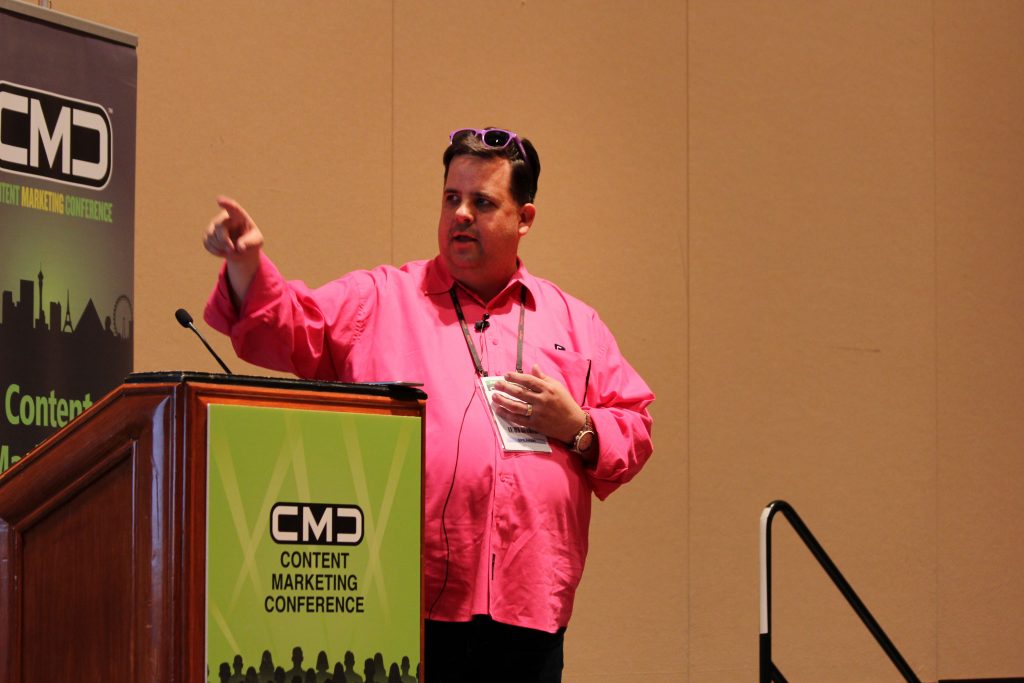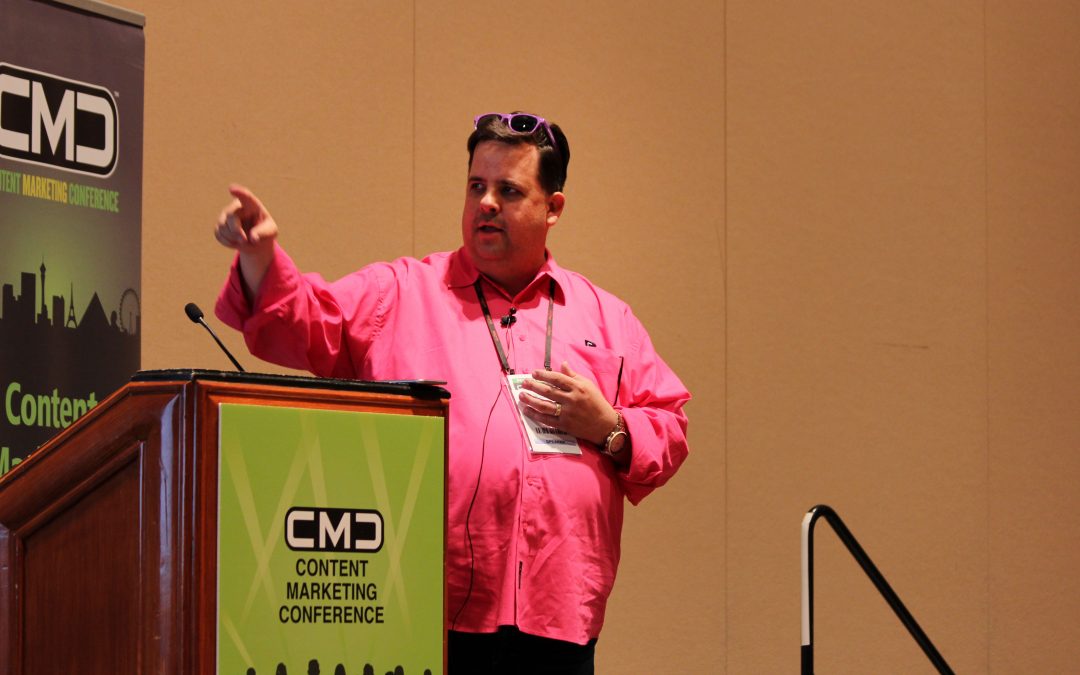Content amplification spreads valuable content to targeted customers through different channels, such as social media sites, blogs, and websites, by using paid tactics. But that can be a waste of money if the viewers who clicked through to get to your site leave immediately because they find nothing of use. Offering ways to create valuable content quickly that reduces bounce rates by half is David McInnis, founder of Cranberry, a marketing platform. He spoke at the 2016 Content Marketing Conference session entitled “Content Amplification.”
What’s wrong with Cost Per Click?
One metric that marketers and content specialists like to use with paid tactics is CPC. It theoretically tells you how much each visitor to your site costs to get there. Except this metric doesn’t take into account the time that your visitors spend on the site, which is the entire point of attracting them there.
It doesn’t do your content much good if someone clicks through to your page and then leaves right away because the content proved irrelevant. You want a low bounce rate, which means viewers are hanging around your site, making them more likely to turn into customers.
David asserts that a better marketing metric is total Cost Per Click or tCPC, which equals CPC divided by the bounce rate subtracted from 1.
tCPC = CPC/(1-br)
For example, if your CPC costs 45 cents but your bounce rate is 0.9, then the equation becomes:
$0.45 / (1 – 0.9) = $4.50
Suddenly, that inexpensive CPC isn’t so cheap any more.
Engagement is the key.
Other metrics include time spent on your website, number of pages per session, and total time spent on the site, which all relate to engagement. You want to develop a relationship with viewers so they keep coming back to you for more. Instead of standing as a one-shot effort, your content then becomes a transactional activity designed to build a long and deep relationship with your audience.
The challenge then becomes how to engage a consumer that has half the attention span of a goldfish.
How does good content appeal to different audiences?
David credits two authorities with showing how good content appeals to different audiences:
- As a publisher of over 200 business books that have appeared on national best-seller lists, Ray Bard knows something about keeping the attention of customers. He points out that all his best-sellers have four messages in common: a big idea, nuts and bolts of carrying out the idea, entertainment and surprise, and hope for the improvement.
- Each of these messages appeal to one of the four different audiences, or personas, as coined by marketing guru Bryan Eisenberg: competitive, spontaneous, humanistic, or methodical.
Relating messages to personas, as David does in the following, is a quick way of creating effective and engaging content:
- Big Idea (competitive): Because competitive personas want to be the best, they want to know why an idea is superior to all others. They need plenty of details and background in the form of case studies, assessments, results, and systems to prove that content is valid and useful. Content targeted to Big Idea people need clear and understandable explanations.
- Nuts and Bolts (methodical): Methodical personas want to know the inner workings of a product or service to find out if it’s worth paying attention to. Content targeted toward them must help them reach a goal with step-by-step instructions.
- Entertainment and Surprise (spontaneous): Spontaneous personas want content that educates and enlightens as well as offers something new. Avoid cheap shots, vulgarity, and sexuality. Instead, be creative, which can be a simple as using interesting words. Share with them content that is odd, unusual, mysterious, or counter-intuitive.
- Hope (humanistic): With an idealistic outlook on life, humanistic personas want ideas that make tomorrow better than today. They enjoy success stories, the triumphs of ordinary people beating the odds, or comebacks from vulnerability and defeat. Create content that solves a problem by highlighting a customer who developed a solution.
How do you amplify content effectively?
David offers the following suggestions for content amplification and creation.
- Avoid click-bait strategies. Websites like Buzzfeed would seem to get a lot of clicks because the links that lead to the site are attention-getting and interesting. Unfortunately, those links often don’t relate to the content, since they’re designed to bring a visitor in however they can. Buzzfeed suffers from an 89 percent bounce rate, so avoid their strategies.
- Pre-bounce the traffic. Let the publisher do all the work by weeding out those who aren’t your target audience. Create honest links that intrigue potential visitors with content that appeals to them.
- Turn your content into best-sellers by making sure they have big ideas, nuts and blots, entertainment and surprise, and hope. You’ll then appeal to visitors of different personas.
- Keep your content short by eliminating unnecessary words. From 300 to 500 words is an ideal size range.
- Start with the meat of your content at the top, like a journalist would with an article. Then drill down into more details.
- Spend from 10 to 15 times the cost of the content on the paid tactics. Focus your amplification on long-term customers instead of short-term ones. If you spend $15 on paid tactics on a customer that returns only $3, you’ve lost $12. On the other hand, if you spend $15 on amplification for a customer with $60 lifetime value, you’ll earn $45.
Do you have time for effective content amplification?
Content amplification requires plenty of research and effort to become effective. Hiring a pro can help you implement these strategies and handle details such as crafting meaningful links, identifying appropriate publishers for paid targeting, and writing content that your customers will eat up.


Since you are paying for a service to bring you more visitors you should better be sure to do everything in your power to attract your specific target audience.
Decent website with solid content always helps to keep the customer engaged but he has to be interested in what you have to offer.
As you represented so nicely in the article, the equation is not that complicated. If you are losing money seek proper help, targeting best potential buyers can be a challenging task.